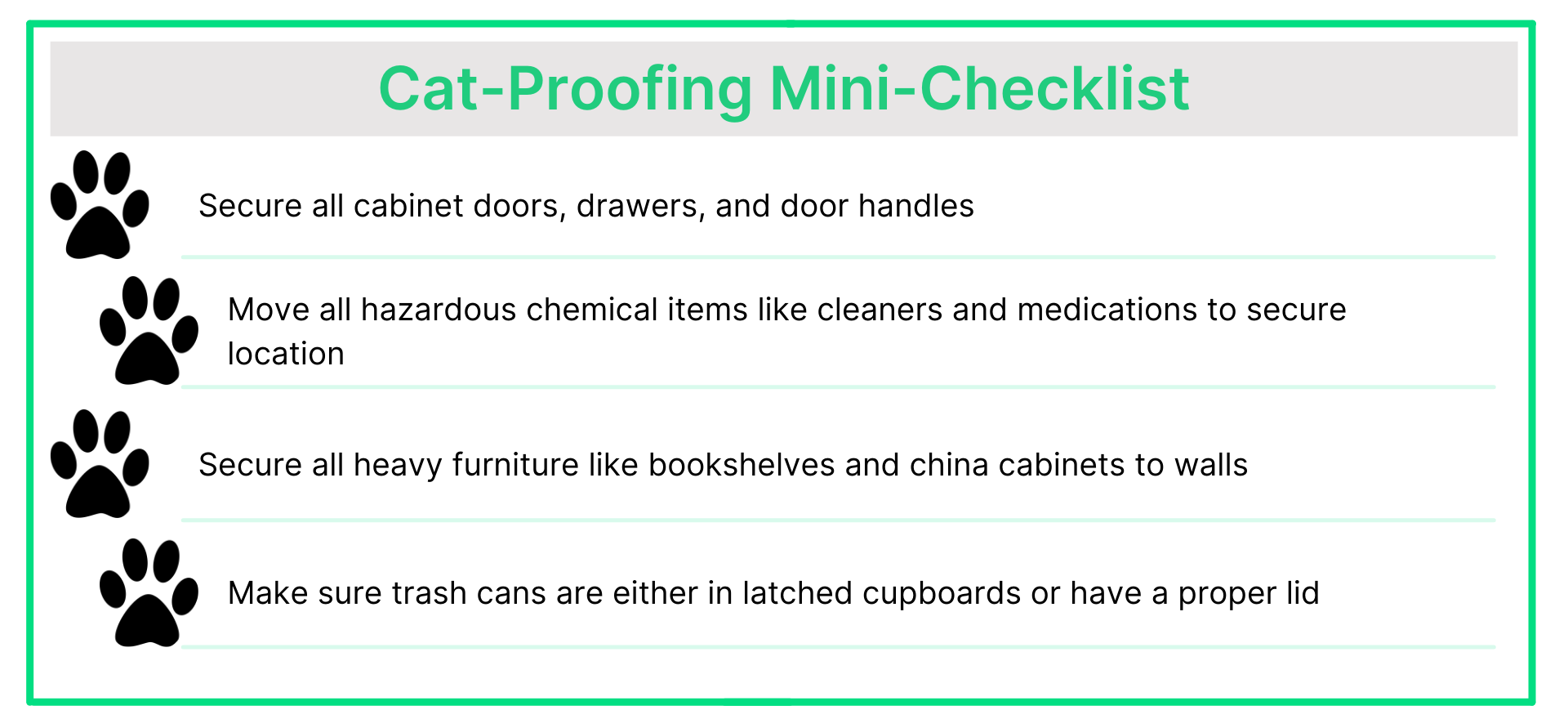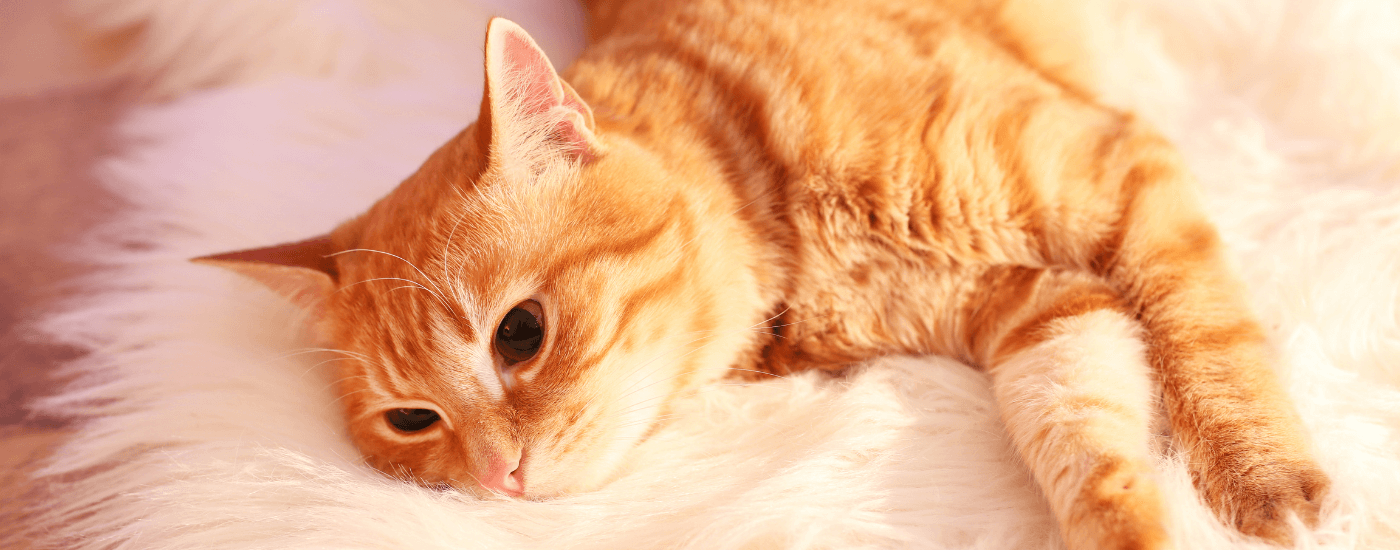Your home is a reflection of your style and its design is important in enhancing your comfort and convenience. Having a pet as a member of your family can have its own impact on how and what you choose to make part of your home’s design and certain pet essentials like litter boxes and scratch posts, are often eyesores.
Whether you are a bonafide “cat-person” or a feline first-timer, it’s important that your home is set up to ensure the health and safety of your furry friend. Luckily, we have some tips on how to do just that without having to sacrifice on style.
What cat-condo?

Cats love these multi-level structures for a number of reasons, mainly the elevated vantage point and the ability to claw and scratch to their heart’s content without getting in trouble. While cat condos are extremely paw-pular, there are a few alternatives, including scratch-resistant rugs and suction-mounted perches that can be attached to a window. These are wonderful, a non-permanent option that your cat can enjoy, but that can also be relocated out of sight in the event you have company coming over. Additionally, as the seasons change, you can rotate which window it’s attached to so that your sun-loving kitty gets the most out of every season.
If you and your pet can’t live without the condo, try placing it in a room where it is out of the way, like in a loft or spare bedroom. If you are short on space, an aesthetically pleasing scratching post could be an agreeable alternative.
Pet Dining with Design

Whether it is investing in elevated food trays or designating a low-level drawer that will be used as an out-of-the-way dining nook, figure out the needs of your cat first, then tackle designing a solution that guarantees the best outcome.
Some things to keep in mind when deciding:
- Dishwasher safety/ easy to clean
- Whisker friendly
- BPA free
- Bacteria resistant
- Food/water separation
- Skid free
Keep cords safe

Cats are drawn to anything string-like, meaning any exposed cords electrical or otherwise, window pulls, fairy lights, light strips, and cables are all fair-game to curious kitties. Luckily many of the solutions that will help ensure the safety of your can will also address some design needs as well.
Unruly electrical cords can ruin the look of a perfectly hung TV or your newly redesigned work-from-home space. A very cost-effective solution is to utilize a cord management system. These options include adding cord hooks to the back of your furniture or installing cord covers that affix your cords to the wall. In some cases, you can also modify certain drawers or cabinets around your home to hide any power strips and cords that may not only be harshing your aesthetic vibe, but also pose a possible danger to your cat.
Properly securing all cords and cables away from your curious critter will set your mind at ease while upping your design game by keeping clutter out of sight.
Plant Parents Beware

Over the past few years, a record number of people became first-time plant enthusiasts, while existing plant fans upped their game, adding more exotic flora to their collections. Chances are if you are a cat person, you are already aware that some types of houseplants, essential oils and potpourri can be harmful, if not fatally poisonous to your frisky feline. If this is the first you’re hearing about these potential dangers it’s imperative that you do your research before purchasing another plant. Certain common houseplants like aloe vera and the trendy Monstera Deliciosa are poisonous to cats, as are some of the most popular essential oils like peppermint and eucalyptus. Most nurseries can tell you if a certain plant is hazardous for cats but always do your own research before bringing any of these things into your cat’s home.
Throw Blanket Buffer

Cats scratch. It’s what they do, and that’s okay! Finding a way to make sure they don’t destroy your expensive furniture can be as easy as putting all of your throw blankets to work. Before leaving the house or going to sleep, put your throw blankets in places that your cat companion normally loves sinking their claws into, like the armrests of sofas or kitchen chair cushions.
Note: You should never declaw your cat. It is harmful for them and can do irreversible damage.
Cat-Friendly Curtains

If your adventurous little housemate isn’t a curtain-climber, count yourself as one of the lucky ones. If your cat does have a tendency to scale even the highest of drapes, fear-not because there are certain materials that cats don’t like to sink their claws into according to HappyCityCat.com, including:
- Microfiber
- Heavy-duty plastic
- Bamboo
- Velvet
Avoid materials with any type of loose-weave like silk or linen, as you will likely have to replace them a number of times before you finally opt for a cat-friendly material anyway.
Training tip: Cats also usually don’t enjoy the feeling of tinfoil on their claws, so when trying to redirect your pet, placing tin foil on items you don’t want them to climb, scratch, sit or play on, can be a quick solution.
Keep Their Bed Basic

While cats are known for snoozing wherever they feel like it, they still need to have their own dedicated space for sleeping. Cat beds also help prevent a build-up of pet hair from collecting in the various corners and cozy spaces in your home.
When you are bed shopping, look for ones with a washable cover that is durable to be put through the spin cycle on a regular basis. Avoid attempting to spoil your pretty kitty with a bed made of fancy materials or excessive details that will ultimately make it more likely to need replacing.
Child-Proofing for Your Fur Babies

Cats are curious, just like children. Using some of the same forethought, there are a few “child-proofing” tasks that could benefit your feline friend as well. Here is a quick checklist to get you started:

If your cat is allowed outside, make sure to take an extra sweep through any outbuildings, under the porch, and inside the garage to ensure you have addressed every area your cat may have access to so that you can rest assured they are safe.
Lastly, the Litter Box

If there is one major, stinky, messy drawback to cohabitating with a cat, it’s the litter box.
Litter boxes are almost always unsightly, often clunky-looking and usually in the way. There are solutions, but first, you have to determine how easy you want to make it on yourself when it comes to your cat’s litter, how much money you are willing to spend, and lastly, but absolutely most importantly- location. Make sure before you go the “just put it in the bathroom” route, to consider if that is the best place or not. From hidden cabinets in mudrooms, to false planters in hallways, there are a ton of exciting choices to make this design dilemma disappear. Once you know where you’re going to keep it, you’ll be better equipped to decide whether to get a state-of-the-art self-cleaning litter box or go the old-fashioned route with a tray full of kitty-sand and a trusty poop-scoop.
Pay close attention to how your cat interacts with items in your home. If basic discipline isn’t preventing them from pulling down your fairy lights or trying to climb onto your counters or stovetop, there is likely an easy design change or product that you could utilize to remain just as stylish, while ensuring your cat is safe and sound.

While cats are extremely adorable, it is important to remember that they are living, breathing animals who require a loving, caring, and safe environment to thrive. Thinking creatively when it comes to your home design and proper pet precaution to limit any harm or damage that can be done is key.




